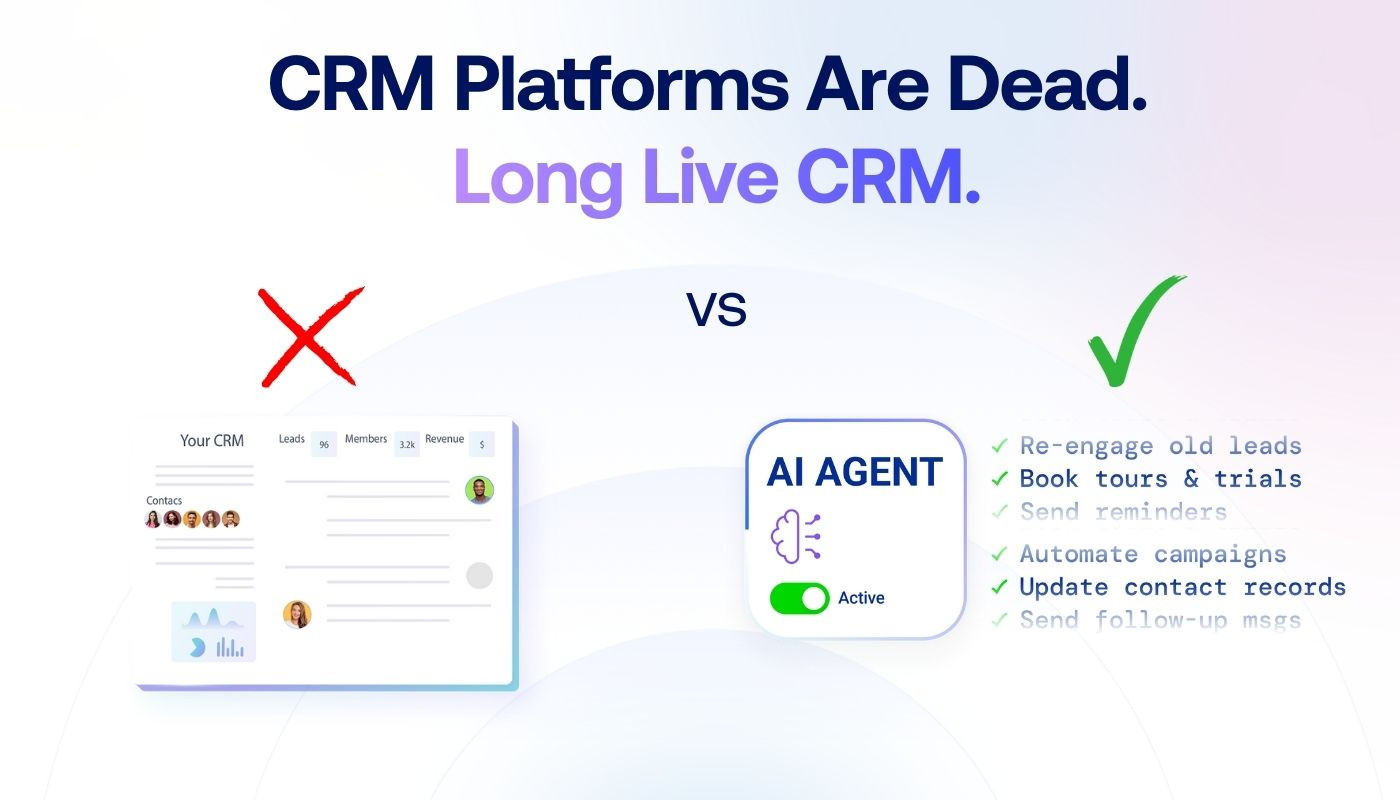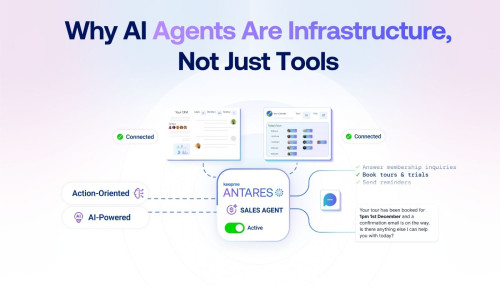Your CRM vendor rolls out another release packed with a long list of new features. Your team will probably touch only a couple of them.
The real issue is not user competence. It is that the tool was never built around the realities of your operation. Your sales staff spend more time wrestling with status fields and dropdowns than speaking with actual prospects. The industry has normalised this. It should never have been accepted, and it is about to be swept away.
AI agents shift the ground entirely. They have no need for your CRM’s polished screens or rigid workflows. They require no tutorials or template libraries. They run on their own, replying to enquiries within minutes, chasing unconverted leads, and tailoring outreach at a depth humans simply cannot match. Think about a traditional lead nurture sequence: you would segment the audience, pick a template, configure a workflow, set timings, then watch the metrics. An agent just executes continuously with personalised logic for every contact. Once agents perform the work, the CRM becomes little more than a data repository. An expensive one, with a user interface no one needs.
Google’s latest model now generates fully tailored interfaces on demand for any query. Keepme is already using this for Antares report creation. Instead of memorising a vendor’s dashboard layout, you ask a question in plain language and get a purpose built interface instantly. Ask for all leads from the past 48 hours who have not booked a trial, along with their goals and preferred contact times, and you receive a dynamic view complete with actions and probability insights. Ask which trial visitors are most likely to convert based on how they have engaged, and a different interface materialises instantly. It appears only when required, vanishing once you no longer need it. No logins. No menus. No hunting for the right report. Antares is already proving this in fitness operations, showing that this shift is not theoretical. It is happening.
Automation is undergoing the same overhaul. Building a workflow today means learning the vendor’s builder, working around its constraints, and hoping it can achieve what you want. With agents, you describe the logic plainly. For example: instruct the system to message someone who missed a booked trial within an hour, include three alternative slots that match their stated availability, and follow up again if they stay silent for a full day. That is an hour of configuration in a legacy system, assuming it can even be done. With an agent, it is a short instruction. You are communicating business logic to something that understands context, not configuring a rigid tool.
Even the major players know the shift is underway. Salesforce has pivoted its entire strategy toward Agentforce, and HubSpot has embedded Model Context Protocol into its stack. MCP matters because it rewrites how systems connect. Right now, your CRM vendor controls integrations through their marketplace. If they have not prioritised the connection you need, you either go without or pay for custom work. MCP enables agents to move data between systems directly, bypassing the marketplace entirely. The agent becomes the connective tissue. If your sales agent needs information from your booking, payment, or marketing platform, it simply obtains it. No waiting for vendor integrations. No third party connectors filling gaps. The agent handles the flow.
This is urgent because operators are still selecting CRMs based on interface aesthetics and template libraries, criteria that will be meaningless within a short window. The advantage is already emerging. Early adopters are seeing stronger conversion performance with leaner teams. Stop asking which CRM has the most features. Start asking which platform offers the best data structure and agent capability. This is not a prediction. It is available right now.
CRM platforms aren't dying. They're already dead. They just don't know it yet.
---3.png)




